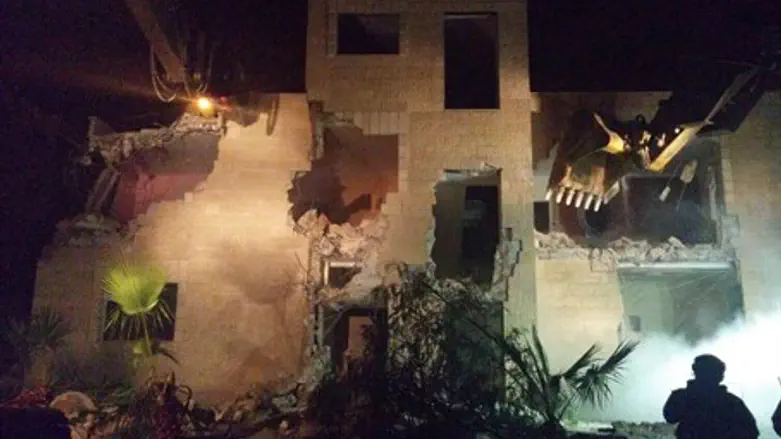
In the half year of the current wave of terror attacks since last September-October, 230 Arab terrorists have tried to murder Jews - but the homes of only ten of them have been demolished.
IDF figures cited by Yedioth Aharonoth on Tuesday reveal that only five terrorist homes have been completely destroyed since early last October, while in another five cases only the floor the terrorist lived on was demolished, and likewise the house of just one terrorist has been sealed off.
Of the homes that were completely destroyed, two of them were of terrorists who murdered Jews in the middle of last year well before the current terror wave, and a third belongs to the terrorist who murdered Dalia Lemkos at Alon Shevut Junction in November 2014.
In each case of partial demolition in which only the floor the terrorist lived on was damaged, at least two months passed each time, allowing the Palestinian Authority enough time to find a fully furnished replacement home for the family of the murderer.
The army has mapped out 124 homes of terrorists, and six demolition orders have been handed out along with seven initial warning orders - all of which are early planning and bureaucratic steps that could only possibly lead to demolition after a significant amount of time has passed.
One of the demolition orders is waiting for approval by the High Court, and another was previously canceled by the High Court. Meanwhile the initial warning orders are waiting for the Justice Ministry to take action on them.
Ignoring half of the terrorists
In light of the number of homes mapped out and the orders given, it can be determined that the government currently does not intend to take any action against the homes of roughly half the terrorists involved in the current intifada.
The government has shown difficulty in formulating a plan to combat the current wave of terror that has already claimed the lives of 34 victims, and given that the attacks have mostly been conducted by incited individuals and not through organized terror groups, deterrent steps such as home demolitions are estimated to be one of the only means to stamp out the terror.
But despite that reality, the government has not shown a willingness to take firm deterrent steps against the environment that produced the terrorist, and thereby make other would-be attackers think twice before going out to murder.
While the Security Cabinet made a decision to speed up the demolition process, most of the homes of those who murdered or seriously wounded Jews remain standing. In the rare cases in which houses are demolished, the step comes many long weeks after the act, severely limiting the effect of the deterrent step.
One reason given for the delay is that international law has changed since the 2000-2005 Second Intifada or Oslo War, and currently the security establishment must legally prove that the demolition is not an act of "revenge" or "punishment," but rather is meant to thwart the next attack.
In the Second Intifada, the commander of the Judea-Samaria division had the authority to decide himself whether to demolish the home of a terrorist, and the destruction could be carried out immediately.
